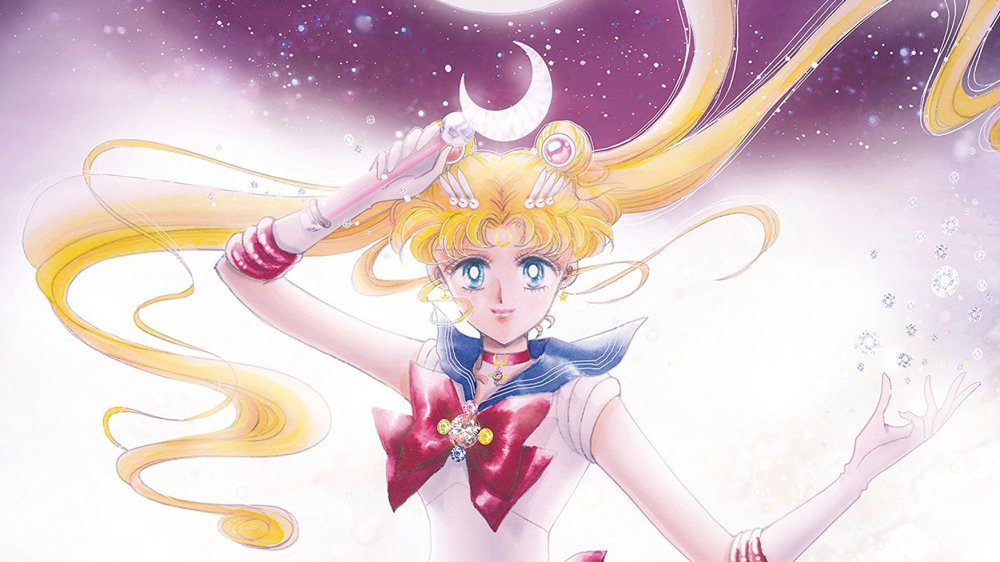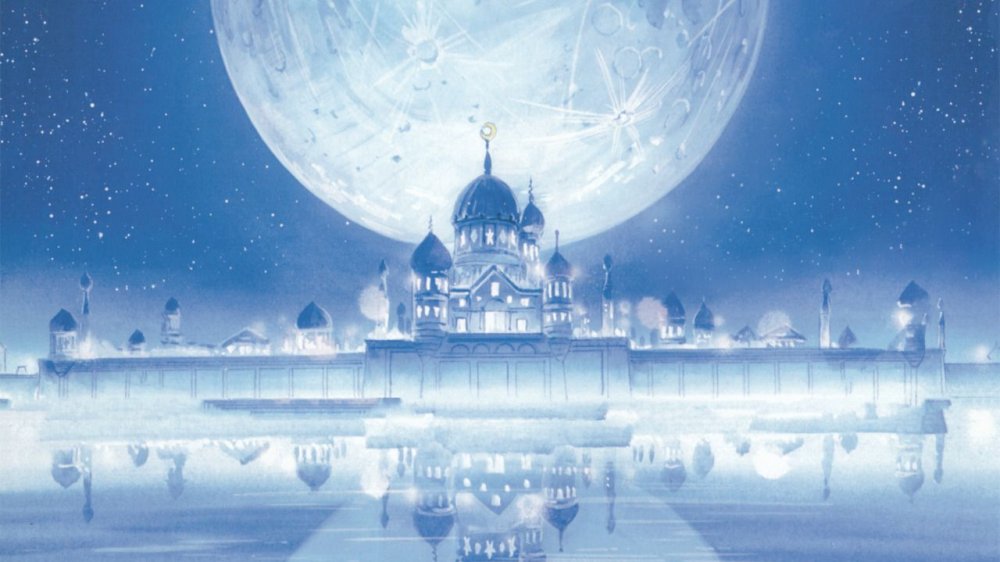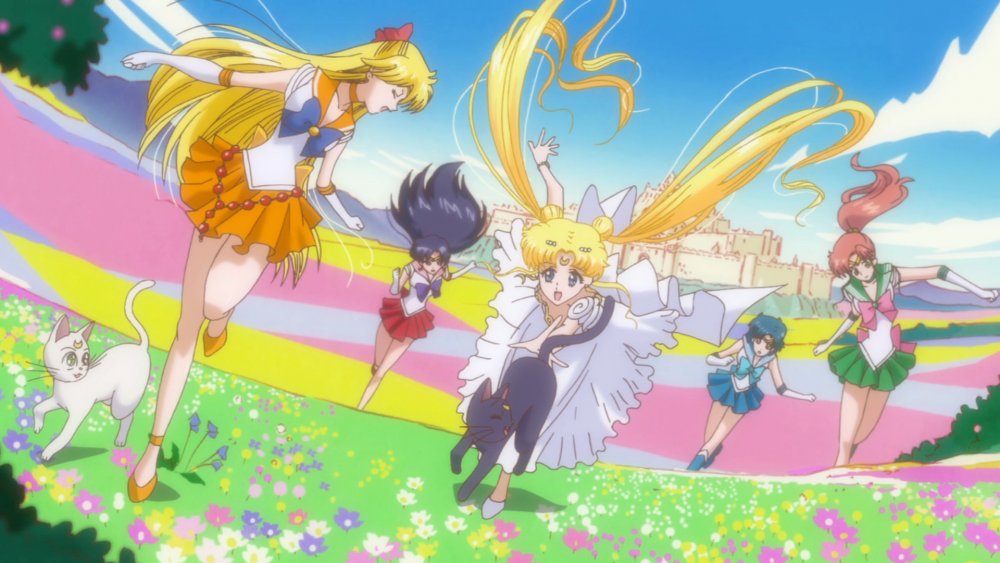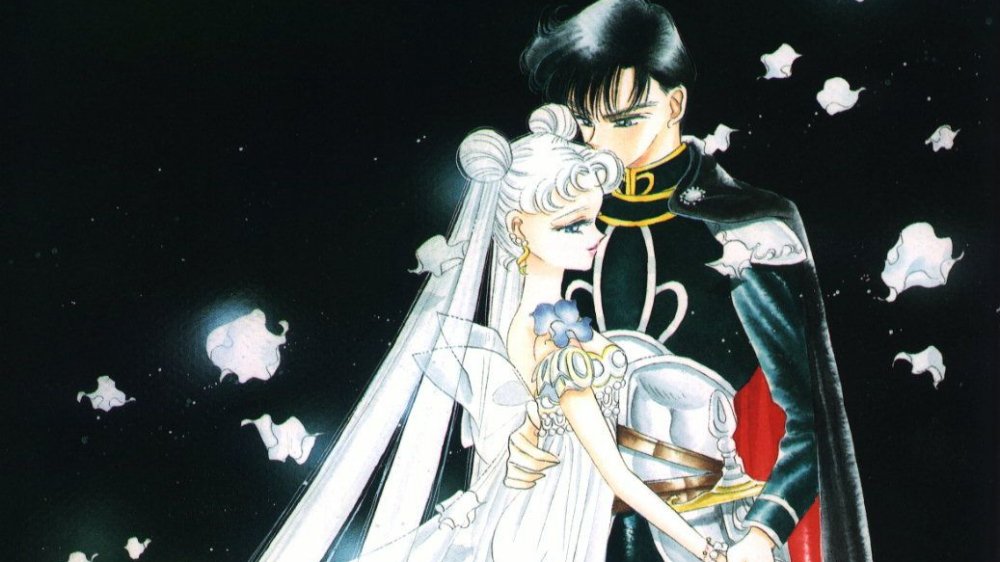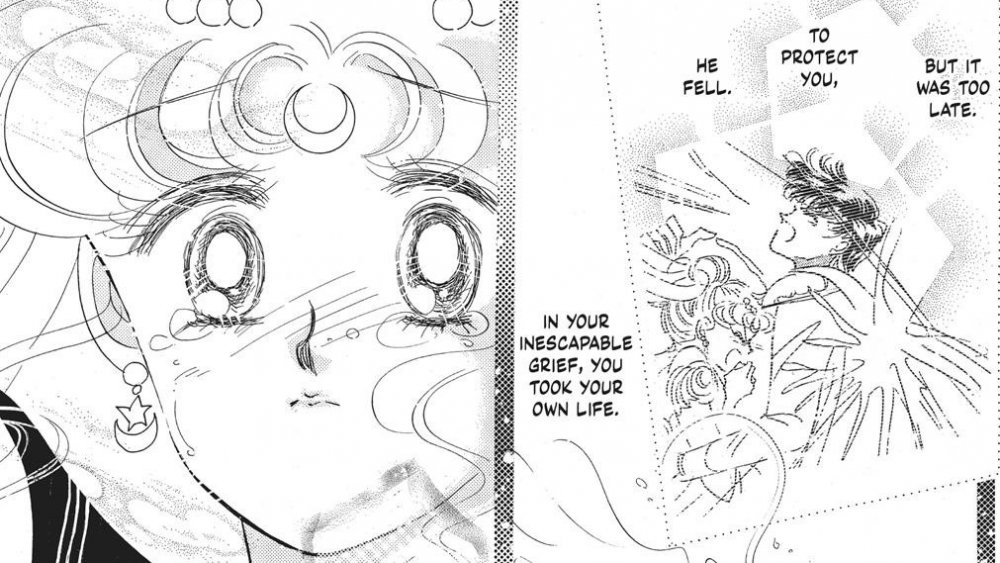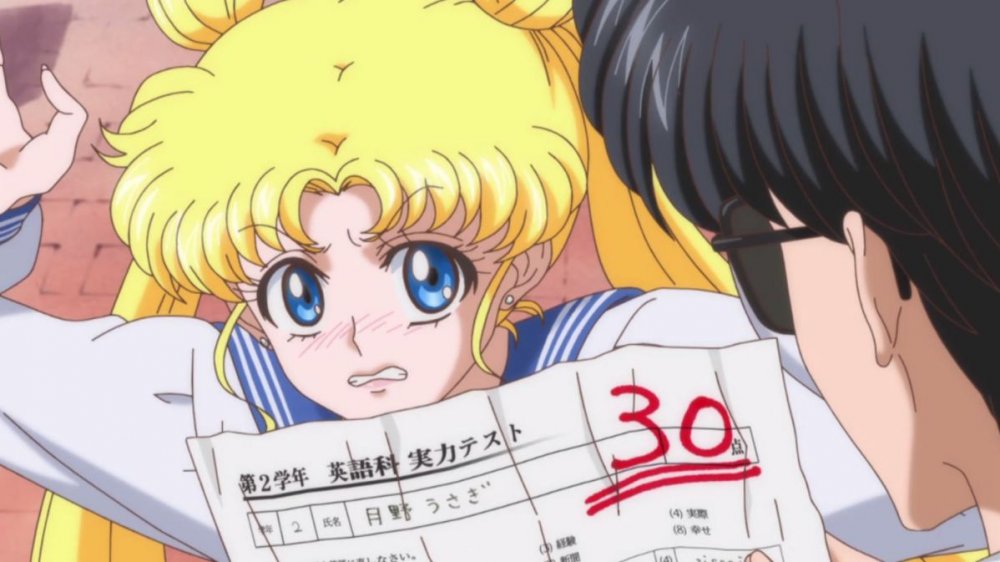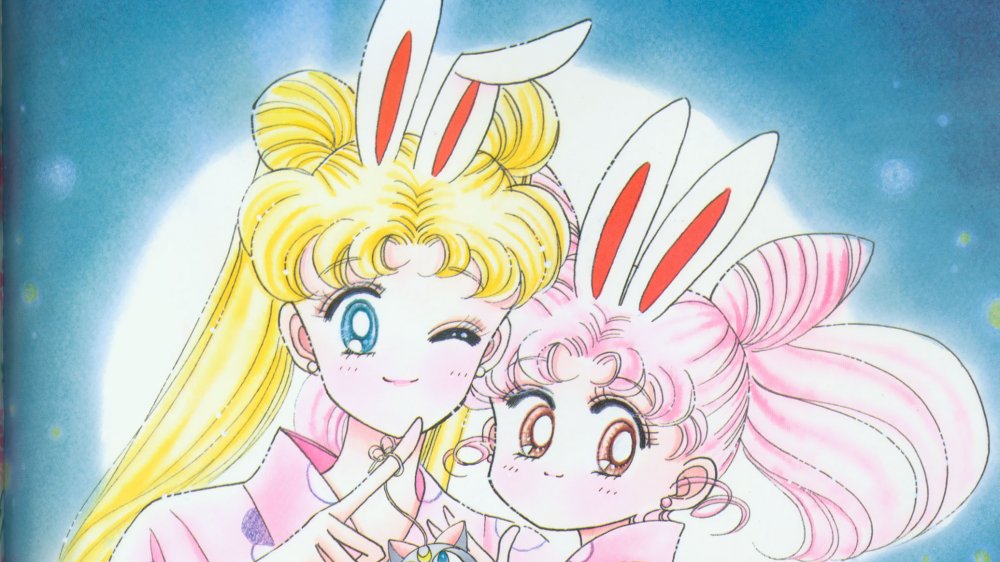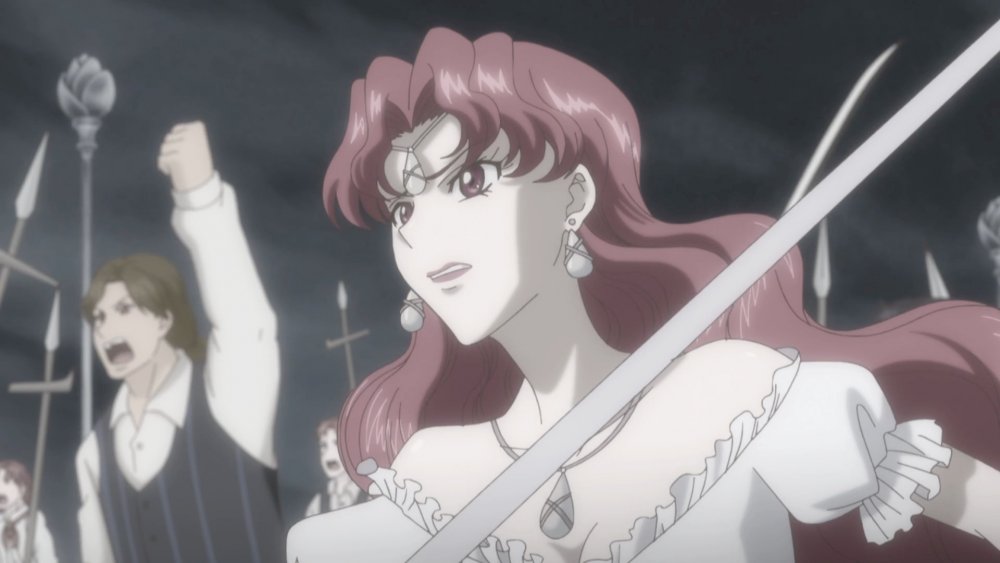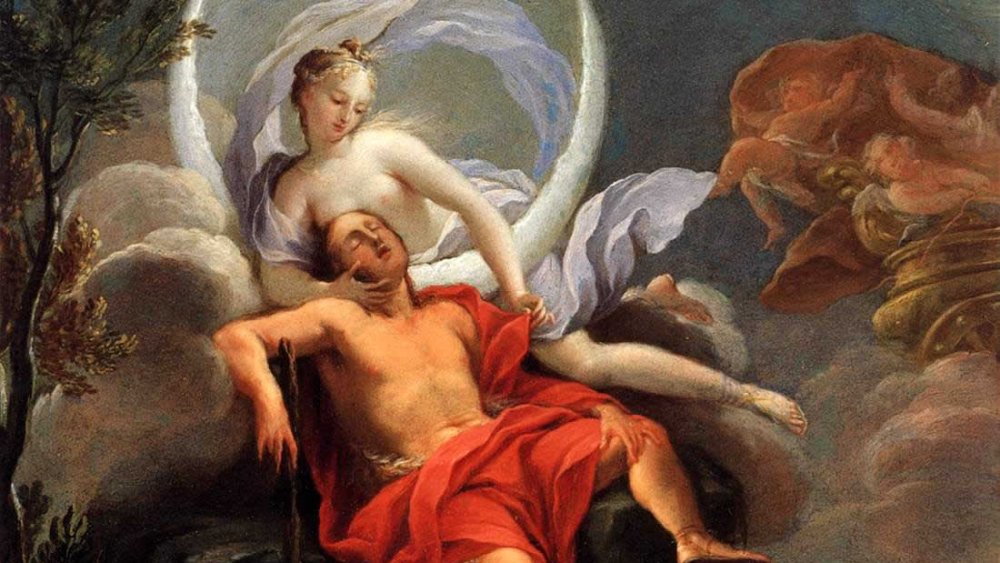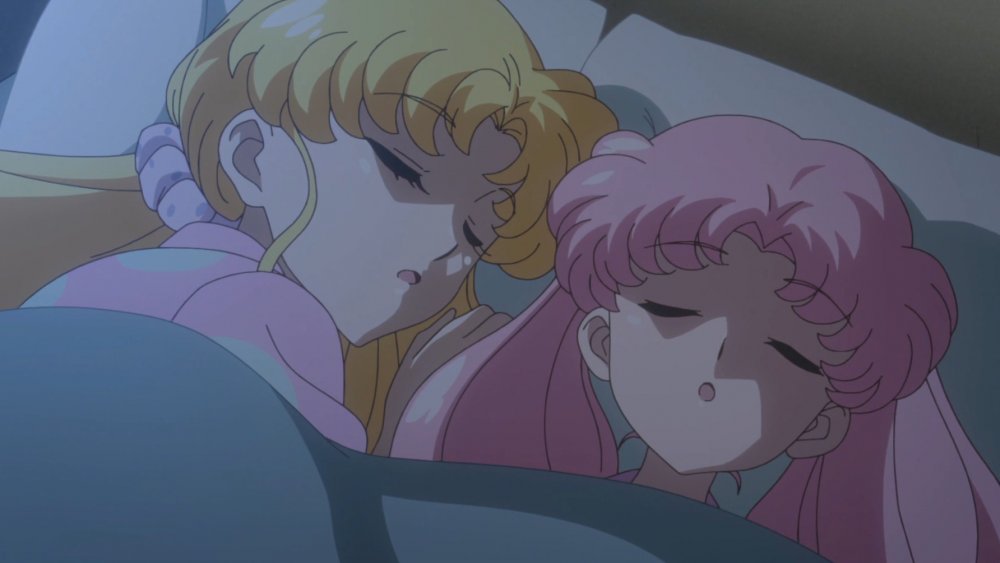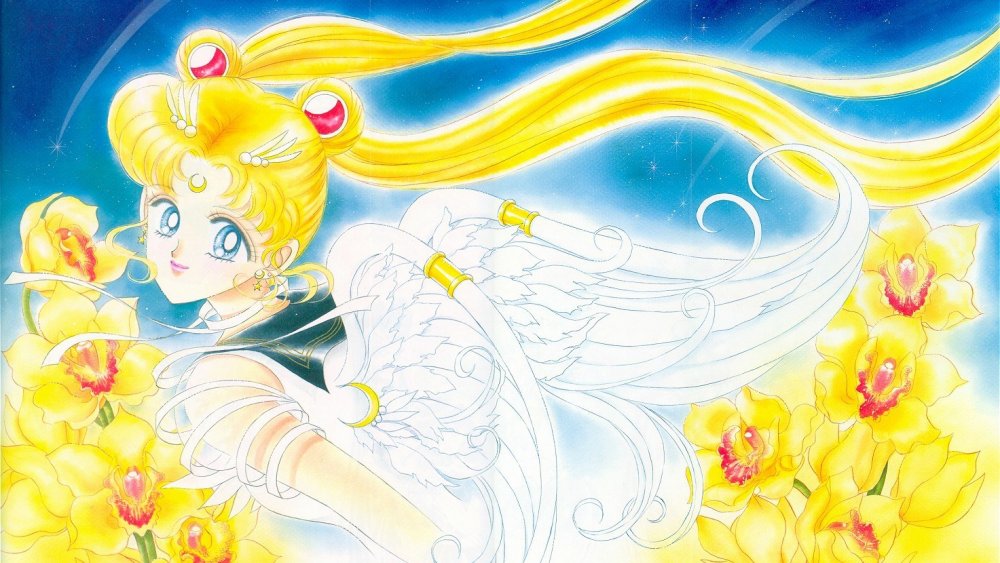Sailor Moon's Entire Backstory Explained
In the decades since its debut, Sailor Moon has attained the sort of international renown only a few anime and manga series ever reach. Olympic figure skaters celebrate it on the ice. Cartoon Network series pay homage to its influence. The Barenaked Ladies immortalized it in a song that took the top spot on the Billboard charts. It's likely to be one of the only anime series your grandmother can recall, alongside Speed Racer and Pokemon. With Sailor Moon Crystal bringing new fans into the fold and a brand-new English dub streaming on Hulu, Sailor Moon doesn't seem likely to leave the public's consciousness anytime soon. And why not? It's as thoroughly magical as the day it was published, a thrilling adventure that manages to combine real emotion with attacks named "Star Serious Laser" and "Jupiter Coconut Cyclone." Despite this well-earned fame, however, there's still quite a lot the average fan might not know about this sailor-suited solider of love. What secrets is the princess-turned-schoolgirl hiding? We're here to spill them, from the meaning of her blood type to the Greco-Roman roots of her romance.
Reign of the Silver Millennium
Thousands of years prior to the start of Sailor Moon, the solar system was ruled by a peaceful matriarchy of long-lived moon-dwellers, empowered by the mysterious Silver Crystal. This tranquil era became known as the Silver Millennium, and at its apex, it was presided over by the gracious Queen Serenity. For generations, this system worked as intended: the Queen oversaw pleasant relations between the planetary societies, art flourished, and even some particularly 1990s conceptions of advanced computing took root in the lunar soil. Though the sailor soldiers did, in fact, exist during this era and were similarly charged with peacekeeping throughout the galaxy, they had quite a lot less to do.
Though Queen Serenity appeared to rule alone, sans any king or consort, she did have a daughter: Princess Serenity, who would go on to be reborn as Usagi Tsukino, she who would become Sailor Moon. Though the princess was as beautiful and benevolent as her mother, she was far younger — and it showed. She preferred pranks and playtime to protocol, had to be calmed by her mother after enduring nightmares, and spent as much time evading her sworn sailor guardians as she did obeying them. Ideally, she'd have had centuries to mature into the steadfast queen the Silver Millennium demanded — but that, of course, did not come to pass.
A princess, not a soldier
Perhaps the most surprising thing about Usagi Tsukino's life as Princess Serenity is that she was never supposed to become a sailor soldier herself. The crystal that would go on to power her transformation was very much part of her life, and was, in fact, the source of her kingdom's power — but within the blissful environs of the Silver Millennium, it didn't need to be weaponized. Serenity was a queen-in-waiting to be protected by the more active, everyday work of her sailor guardians, rather than a warrior herself. She was meant to be a beacon of goodwill and leadership who'd never need to dirty her hands with demon-slaying, monster-chasing, or scheme-disrupting.
During this era, the sailor soldiers were more like a royal guard than the task force and ersatz army they'd go on to become centuries later. And though they certainly spent time beating down bad guys, they were just as often involved in Princess Serenity's education. The manga offers glimpses of Sailors Mercury, Mars, Jupiter, and Venus instructing their princess in history, comportment, and astronomy, acting as much like teachers (and in the princess' brattier moments, like nannies) as sworn swords. There was no Sailor Moon because they'd made sure there never had to be — Princess Serenity's life of peace and preparation had been ensured by their careful work. Until, of course, it wasn't.
Love in the midst of war
All the marble verandas and talking cats in the galaxy could not, unfortunately, keep Princess Serenity content forever. She longed for adventure, excitement, and novelty — and found it in the last place anyone could have ever expected. Somehow, she and Prince Endymion, her equivalent on Earth, met each other, fell in love, and embarked upon a clandestine relationship expressly forbidden by the laws of their lands.
Relations between the moon and the Earth grew more and more frayed during this time. Rebellion was brewing, stoked by the earthlings' distrust of the Silver Crystal's magic. Why did the people of the moon deserve to command its prodigious powers — to say nothing of the functional immortality it granted them? Queen Metalia, a primordial being of spite and greed, took advantage of this burgeoning disorder, ultimately using the woman who would become Queen Beryl as a figurehead. In swift succession, Serenity became a symbol of the moon's mendacity, Endymion's love for her was deemed an unforgivable betrayal, and the violence that would tear the lovers apart exploded into open warfare. The Silver Millennium was over, and with it, Princess Serenity's childhood.
The end of an era
The war ravaged the moon, destroying its pristine landscape as thoroughly as its civilization. At its terrible climax, Queen Beryl, possessed fully by Metalia's malevolent spirit, killed Endymion with a fatal slash of her sword. Her forces overran the moon, tearing apart its halls and gardens, leaving the sailor guardian defense system in tatters. Devastated by Endymion's death and the end of all she had ever known, Princess Serenity committed suicide by impaling herself upon the sword that brought down her lover.
Queen Serenity was left suddenly, horrifyingly alone. Stripped of her family, her temples, her kingdom, and her subjects, she used the power of the Silver Crystal to seal away the souls of her daughter, Endymion, the sailor soldiers, and their guardian cats, to be reborn in a time of renewed peace. There, she hoped, they might prosper once more, find love in each other, and seal away the evil that had laid waste to their home. With this final effort, she too fell dead — and Princess Serenity became the heir to all she left behind.
A modern girl with modern problems
Centuries passed until the souls of the Silver Millennium found a home in modern-day Japan. Though they all took root near Tokyo's Azabu-Juban district, their lives varied wildly: Sailor Mars became a reserved keeper of her family's ancestral Shinto shrine, Sailor Mercury was raised by her elegant single mother, Sailor Jupiter was orphaned at an early age, and Sailor Venus led a pre-series life as the vigilante Sailor V.
What life was Princess Serenity reborn into? A remarkably normal one, especially when compared to her friends: as Usagi Tsukino, she became one of two children born to Ikuko, a housewife, and Kenji, a magazine editor. She is, at the story's outset, a cheerful girl with many beloved friends, still very much the bright-eyed princess she'd been. But she is also, as her very own internal narration reveals within the first few pages of the series, "kind of a crybaby," a lazy student, and a bit of an all-around brat. Her heart, of course, is pure in all the ways that matter — she might drag her feet on the way to a challenge, but she'll show her mettle once she's there — but one is better off not asking after her most recent test scores. In this sense, she was very much still the girl she'd been thousands of years in the past: kind, silly, and more than a little prone to pursuing her heart, no matter where it might lead.
Fight evil by moonlight, at the arcade by daylight
What, one might wonder, was Usagi wasting her time on when she wasn't completing the homework and chores her authority figures were always complaining she shirked? Indulging in that most modern of vices, in fact: video games. That's right — Sailor Moon is one of the most famous fictional gamers around, so devoted to the medium that her fandom is introduced in the very first chapter of the manga, alongside such iconic Sailor Moon elements as Luna and Tuxedo Mask. She indulges most often at an arcade near her home, managed by an older boy she nurses a crush on — a location that would become a secret base for the sailor soldiers. But before they were making battle plans in its basement, it was just a place Usagi went to crush her high score on the Sailor V game. Later on in the series, Usagi is seen playing games on home consoles — one wonders what her favorite Nintendo 64 titles were — but the arcade remains a special place for her to gather alongside her loved ones. The Silver Millennium of her first life might have crumbled in the face of evil, but silver lining: at least it means Usagi got to be reincarnated in time to check out Banjo-Kazooie.
A folkloric name
Naoko Takeuchi filled every corner of the Sailor Moon universe with references to mythology, folklore, history, and, of course, the vast and varied world of astronomy. No character embodies that tendency more than Sailor Moon herself — especially her name.
To begin with, "Usagi Tsukino" translates to "rabbit of the moon." Usagi is very much aligned with rabbits throughout the series, to the point that the original English edition of the series translated her name as Bunny. But the comparison goes beyond the adorable and into the genuinely fascinating when one learns of the name's legendary origins. The "rabbit in the moon" is a major figure in East Asian folklore, based on what many see as the shape of the animal in the moon's darkest craters. Opinions differ as to what the rabbit is doing, though most agree it looks to be using something like a hammer and container: certain Chinese legend connects the story to the myth of Chang'e, while the 8th-century poet Li Bai described a rabbit "pounding medicine" in his work. In Japan, the rabbit is imagined to be making mochi. The story is so widespread that Apollo 11 astronaut Michael Collins mentioned keeping an eye out "for the bunny girl" — though if he did, in fact, run into a sailor soldier up there, he's stayed mum.
Villains from the past
Usagi's past is as much of a gift as a curse throughout her journey, but in an important way, it serves as a warning. Thousands of years before she'd battle them on the streets of Japan, Princess Serenity encountered two of her greatest foes.
The first was Queen Beryl, revealed by the manga to have once been an earthling witch filled with unrequited love for Prince Endymion. Metalia, sensing the power of this longing, took advantage of it, transforming Beryl into the murderous queen who would bring the Silver Millennium to an end and return, centuries later, to oppose Princess Serenity once more. Later chapters revealed an even earlier foe of the then-infant princess: Nehelenia, villain of Sailor Moon's fourth story arc. Queen Serenity's dark mirror, Nehelenia appeared at Princess Serenity's birth and managed to curse the child before Queen Serenity sealed her away in a mirror. That seal would eventually break — but by that point, the reincarnated Sailor Moon would be ready to take her down for good.
The goddess and the shepherd
Astronomy and Japanese folklore might be the most prominent places Naoko Takeuchi drew inspiration from, but they aren't the only ones by a long shot. The romance between Usagi and Mamoru, a central pillar of the series across adaptation and medium, is, in fact, drawn from the Greek myth of Selene and Endymion.
Like all ancient myth, its interpretations are many and opinions differ as to what should be considered the "real" story — if, in fact, one can be divined at all. But basically, the story goes like this: Selene, goddess of the moon, fell in love with the earthbound Endymion. Some stories suggest he was nothing more than a mortal shepherd, while others depict him as a king, perhaps with a divine father in Zeus. Regardless, he was bound to the earth and stubbornly mortal, and so Selene convinced Zeus to put him in an eternal sleep, so that he might live forever. Some stories go on to tell of the 50 daughters born from their union, while others bring in Hypnos, god of sleep. What they all have in common is the love that bound the goddess and the man together — a connection so strong, it would go on to inspire Takeuchi's own tale of love unbound by time and space.
Mother and daughter, living like sisters
Sailor Pluto arrives as part of Sailor Moon's second story arc and brings time travel, her signature ability, with her. Her dominion over the doors of time — often portrayed literally as enormous doors she physically guards — is incredible, but used sparingly, in no small part because overuse can result in her death. It is a duty more than a divine gift, one that she and the sailor soldiers only use in the most extreme circumstances. Chibi-Usa, Usagi and Mamoru's daughter born centuries in the future, uses it without permission out of desperation — her mother, Sailor Moon's future self, was dying and all hope appeared to be lost. It's a last-ditch effort made by a terrified child, and was never meant to last.
And yet it did. Perhaps the strangest aspect of Usagi's life story is that she ends up spending most of her teenage years with her time-displaced daughter, living as sisters in the Tokyo of the 1990s. Though Chibi-Usa idolizes the Usagi of her time, she finds her mother's girlhood self to be bratty and unimpressive. Love does, eventually, bloom — but only after many years, battles, and fought-over desserts.
Astrology, birthstones, and bloodtypes
A big part of the fun of creating any character is sprinkling them with the sort of details that might never make it to the page. What's their favorite food? Biggest guilty pleasure? When were they born, and how do they celebrate their birthday? Naoko Takeuchi indulged in this to a degree even the most seasoned fans might not be aware of. Did you know, for example, that Sailor Mercury's favorite food is sandwiches, and that Sailor Venus has a tendency to mouth off to cops?
Sailor Moon herself is no exception. Every aspect of her name, background, life, birth, and health were lovingly determined by Naoko Takeuchi — and each and every one contains character information. Usagi's birthday, June 30, makes her a Cancer, often described as the emotional center of the zodiac and — you guessed it — ruled by the moon. June's birthstone varies depending upon who one asks, but generally speaking, it's moonstone (surprise, surprise!) and the pearl, both of which symbolize purity. One detail Western fans might not expect to be salient is Usagi's blood type, which is O, the highly helpful universal donor. Japanese culture holds blood types to be indicative of certain personality traits, those with type O blood being confident, intuitive, and agreeable. From her birth to her body, all details agree: Usagi was born to be a beacon of kindness, joy, and empathy for all the world.
